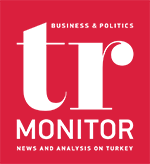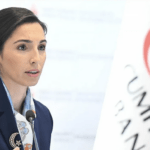Exactly one year has passed since the earthquakes centered in Kahramanmaras, which were called the disaster of the century. More than 50 thousand lives were lost and the economic cost of the earthquake was calculated as USD 110 billion. After one year, the expenditures made so far have remained at the level of USD 30 billion.
More than 50 thousand citizens lost their lives and 850 thousand houses and commercial buildings were destroyed with heavy damage. While Turkey mobilized to heal the wounds of the disaster, priority was given to meeting the housing needs of citizens who lost their homes in the earthquake. According to the Ministry of Environment, Urbanization and Climate Change, 650 thousand houses were destroyed in the earthquake. The number of houses completed so far and to be delivered to the rightful owners in February is 46 thousand. This number is expected to reach 75 thousand by the end of April and 200 thousand by the end of the year.
According to the Ministry of Environment, Urbanization and Climate Change, the cost of the earthquake disaster to the national economy amounted to USD 110 billion. According to the information provided by Mehmet Şimşek, the Minister of Treasury and Finance, earthquake expenditures from the budget have reached TRY 950 billion. In other words, USD 30 billion of the USD 110 billion cost has been spent. In 2024, a TRY 1 trillion 28 billion expenditure is foreseen, corresponding to USD 30 billion at today’s exchange rates.
Earthquake donations approach TRY 130 billion
According to the data dated February 1, 2024, the amount of donations collected at AFAD for the relief of the wounded reached TRY 128.83 billion. TRY 79.26 billion of the collected donations were spent. The highest expenditure item was the expenditures made to meet the temporary shelter needs of citizens. In this context, TRY 30.34 billion was spent for tents, containers and infrastructure needs.
4.64 million people were working in the earthquake zone
The number of people working in all sectors, including the public sector, in the earthquake zone, was determined as 4.64 million people. Of these, 58.5 percent were in services, 22.5 percent in manufacturing and 19 percent in agriculture. Unregistered work is also widely observed in the region. To protect employment and support those affected, the most prioritized step, in addition to general support, was the acceleration of cash payment support, short-time working, wage guarantee and unemployment insurance payments from the Unemployment Insurance Fund. As of June, 12.3 percent of employment in the region benefited from unemployment insurance and short-time working. Within the framework of financial measures, all interest, tax, restructuring, declaration and other public financial-administrative obligations related to social security payments of firms were postponed. In the Ministry of Labor and Social Security, which is the public health service provider in terms of SSI, pharmacy and hospital payments in the field of health were accelerated.










